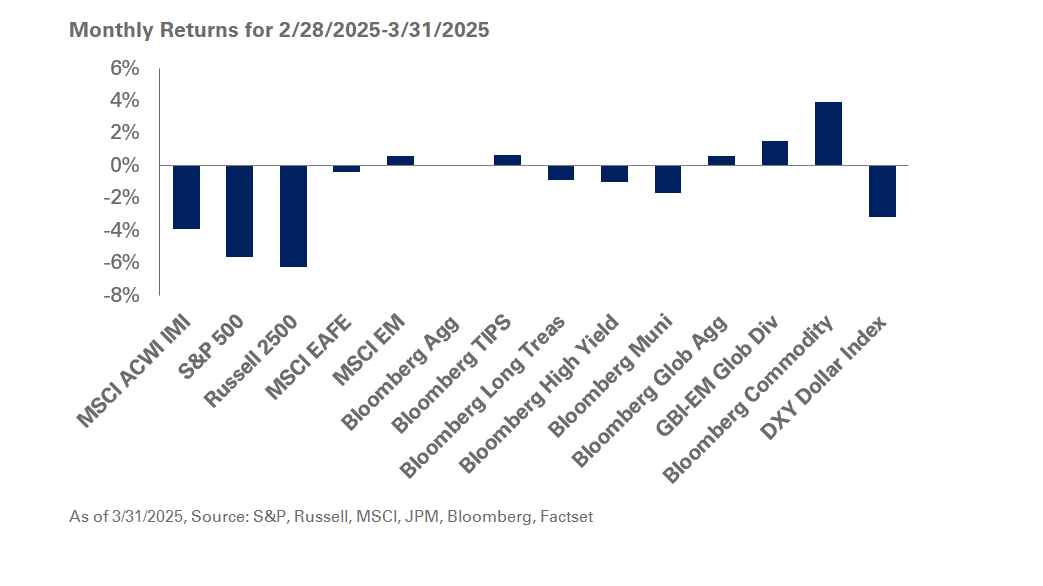Finally, 2021. And the chance to turn the page on the heartache that was 2020. It was a year of incalculable tragedy with hundreds of thousands of lives lost to the COVID-19 pandemic, unrest over the pervasiveness of racial inequities, and hardships caused by economic disruption. It was a year that laid bare the sheer magnitude of inequalities—be it the access to healthcare, personal safety, job opportunities, education, food and housing—that exist in the United States.
It was also a year of introspection that compelled many of our clients to demand more from their investment dollars. In addition to aligning their operations to their mission and values, they also want their investment portfolio to reflect their impact goals. At NEPC, impact investing is an implementable idea—not a theoretical notion—that can help clients earn financial returns while making a societal contribution. Its execution should be thoughtful and deliberate, and its effectiveness measurable.
We believe many of our clients can benefit from impact investing, but we also get a lot of questions and realize there are various misconceptions around this topic. As a starting point, we outline four distinct investment approaches from which you can choose; these approaches are not mutually exclusive, and can be implemented in tandem with each other.
Cancel or Consider?
Probably the two most common approaches to portfolio alignment are ‘negative screening’ and ‘ESG integration.’ These cause confusion because while their goals are similar, their approaches are virtually opposite, and they are suitable for different types of investors.
Approach 1: Cancel
Strategy: Negative Screening |
Description: Avoid companies, products, or industries that you don’t support. This strategy has been around for decades because it’s a straightforward approach. |
Example: Historically, lots of people have sought to avoid ‘sin stocks’ like guns, liquor or tobacco. More recently, many investors with a particular concern about climate change have sought to divest from companies that produce or are dependent on fossil fuels, as opposed to renewable energy sources. |
Suitable for: Negative-screening portfolios place blunt limits on portfolio managers and are not necessarily designed to find the best long-term investments. For that reason, negative-screening strategies are best used by organizations with strong missions or specific philanthropic goals, such as religious institutions. Screening can be challenging to implement as it is often accompanied by higher investment management fees and a more restricted universe of options. |
Approach 2: Consider
Strategy: ESG Integration |
Description: ESG integration looks at a firm’s environmental, social and governance data to glean intelligence on its long-term viability and value. In addition to portfolio managers assessing each company on the basis of its financial fundamentals, they also consider material information about its environmental impacts, stakeholder relationships, and governance record. Investments that are strong on these counts are viewed as quality investments that are less likely to be derailed by unforeseen risks. |
Example: The implosion of Equifax in 2017, when a data breach exposed the personal information of 145.5 million Americans and wreaked havoc on its reputation and its stock price. Monitoring the firm’s ESG data could have helped in forming a clearer picture of the true risks of investing in Equifax. |
Suitable for: This strategy has the broadest appeal for most investors because it builds on traditional analysis, rather than trying to replace or constrain it. A well-developed ESG rating system, such as the one NEPC has developed, allows investors to benefit from a firm’s financial gains while being aware of risks that might not show up on a balance sheet. It also gives investors an opportunity to get an early look at firms that are exploring–and potentially utilizing–impact-related opportunities. |
Themes and Engagement
While negative screening and ESG integration are the most commonly implemented strategies, there are other approaches that have proven effective for impact investors.
Approach 3: Sharpen Your Focus
Strategy: Thematic Investing |
Description: A specialized approach that prioritizes specific impact issues, such as expanding the use of renewable energy, improving access to healthcare or addressing racial equity. Unlike negative screening, these strategies tend to take a more constructive approach, actively investing in firms that have solutions to offer while also achieving financial goals. |
Example: As environmental concerns have become more severe, managers are responding by presenting public and private investments that target companies offering sustainable solutions. We have seen a variety of themes here, ranging from agriculture technology, energy efficiency, water and waste management, to food security and access. Investors also are increasingly focused on DEI, that is, diversity, equity and inclusion, and are taking steps to view and assess their portfolio through this lens. |
Suitable for: The idea with thematic investing is to be proactive with your capital. The approach is a good fit for investors with a specific impact interest area in mind, especially those who prefer to focus on investing in companies offering solutions rather than avoiding firms deemed problematic. |
Approach 4: Progress by Proxy
Strategy: Engagement |
Description: Invest in the firms you like but take an active approach to discussing ESG and impact issues with company management, and/or utilize proxy votes to focus the company’s attention on matters of concern. This strategy tends to work best when investors join forces in voting blocks or other organized campaigns to communicate with the company. |
Example: Shareholder initiatives by large institutional investors, like New York City’s pension fund, which is pressuring major companies to release workforce data on race and gender or face a shareholder vote this year. |
Suitable for: Engagement demands time and organization, so the strategy is best employed by professionals with the time and resources to build alliances and see the strategy through. NEPC can facilitate engagement by connecting clients with like-minded investors or peer networks. |
Speaking Up
We are here to help you find an impact investing approach that achieves a societal contribution without compromising on financial returns. Be it through incorporating environmental, social and governance factors in the investment process or thematic investing initiatives, we are confident we can find the right strategy for you.
Whether you are in the process of moving along your impact journey, or at the beginning of determining your strategy, our team is here to help. Please reach out to your NEPC consultant to evaluate the alignment of your existing portfolio to your impact goals.



